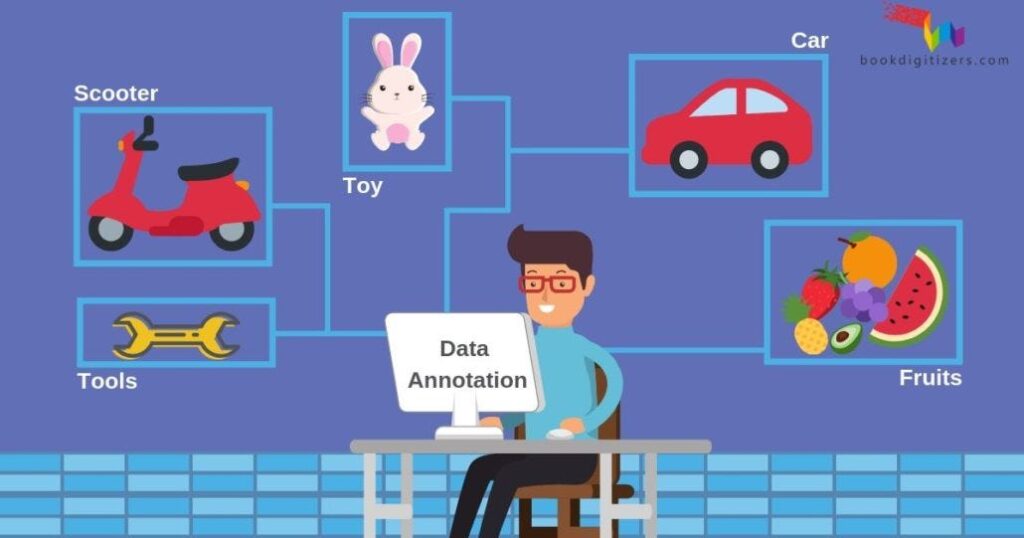In the realm of machine learning, data is the fuel that powers algorithms and enables intelligent decision-making. However, not all data is created equal. To extract meaningful insights and build accurate models, machine learning algorithms often require annotated data. Annotated data, also known as labeled data, is data that has been carefully labeled or annotated with relevant information by human experts. This article explores the concept of annotated data and delves into its crucial role in machine learning.
Understanding Annotated Data
Annotated data refers to data that has been enriched with additional information, typically in the form of labels or tags. These labels provide context, meaning, or classification to the underlying data. For example, in an image classification task, each image in the dataset may be annotated with labels indicating the objects present in the image, such as “cat,” “dog,” or “car.”
The process of annotating data involves human experts manually reviewing and labeling the data based on predefined criteria or guidelines. This can be a time-consuming and labor-intensive task, especially when dealing with large datasets. However, the effort invested in annotating data is invaluable, as it enables machine learning algorithms to learn from the labeled examples and make accurate predictions on new, unseen data.
The Role of Annotated Data in Machine Learning
Annotated data plays a pivotal role in various machine learning tasks, including supervised learning, semi-supervised learning, and reinforcement learning. Here are some key applications of annotated data in machine learning:
1.Supervised Learning
Supervised learning is a popular machine learning technique where models are trained on labeled data to make predictions or classify new, unseen instances. Annotated data forms the foundation of supervised learning, as it provides the ground truth or correct answers that algorithms can learn from. By exposing the algorithm to a diverse range of annotated examples, it can generalize patterns and make accurate predictions on unseen data.
2.Semi-Supervised Learning
Semi-supervised learning is a hybrid approach that combines labeled and unlabeled data. Annotated data is used to train the model initially, and then the model leverages the unlabeled data to further refine its understanding and improve performance. This approach is particularly useful when labeled data is scarce or expensive to obtain.
3.Reinforcement Learning
Reinforcement learning involves training an agent to make sequential decisions in an environment to maximize a reward signal. Annotated data can be used to define the reward function and provide guidance to the agent during the learning process. By associating actions with positive or negative outcomes, the agent can learn to make better decisions over time.
Challenges and Considerations
While annotated data is invaluable for machine learning, there are several challenges and considerations to keep in mind:
1. Quality and Consistency
The quality and consistency of annotations are crucial for the success of machine learning models. Human annotators must follow clear guidelines and standards to ensure accurate and consistent labeling. Quality control measures, such as inter-annotator agreement and regular feedback loops, can help maintain annotation quality.
2. Bias and Subjectivity
Human annotators may introduce bias or subjectivity into the annotations, which can impact the performance and fairness of machine learning models. Careful consideration and diverse perspectives are necessary to mitigate these issues and ensure unbiased annotations.
3. Scalability and Cost
Annotating large datasets can be time-consuming and expensive. As the size of datasets continues to grow, scalable annotation methods, such as crowdsourcing or active learning, are being explored to reduce costs and increase efficiency.
Conclusion
Annotated data serves as the backbone of machine learning, enabling algorithms to learn from labeled examples and make accurate predictions on new, unseen data. Whether it’s image classification, natural language processing, or any other machine learning task, annotated data provides the necessary context and ground truth for algorithms to learn and generalize patterns. However, challenges such as quality control, bias, and scalability must be carefully addressed to ensure the reliability and fairness of machine learning models. As the field of machine learning continues to advance, the importance of annotated data will only grow, driving further innovation and breakthroughs in artificial intelligence.


annotation